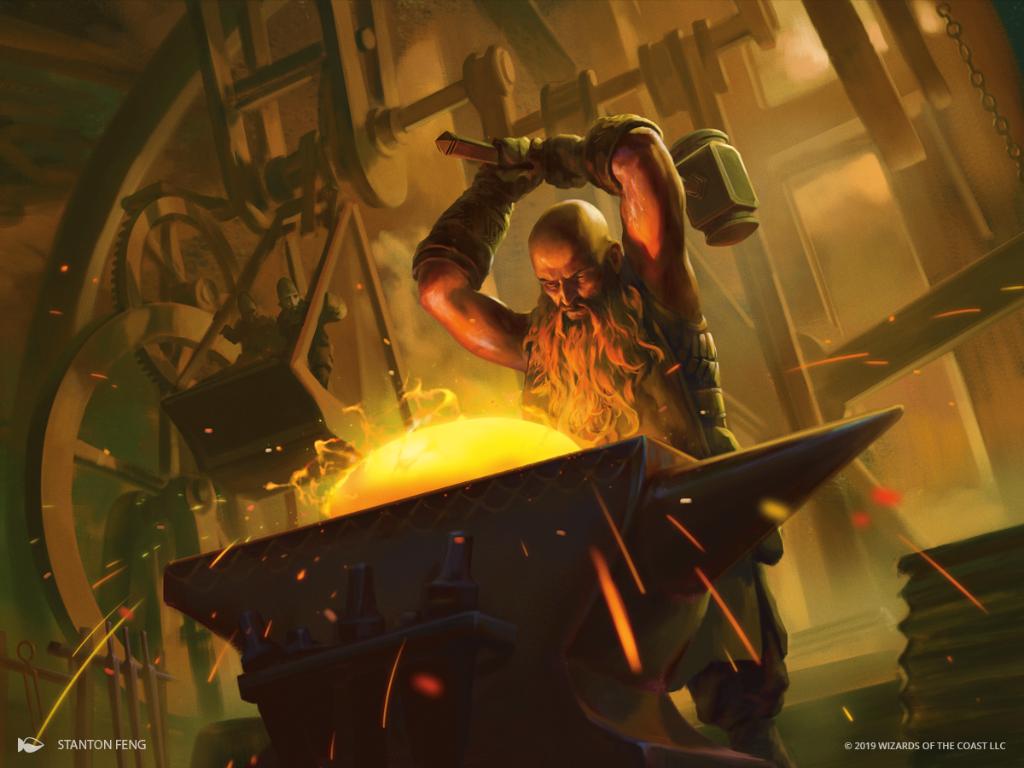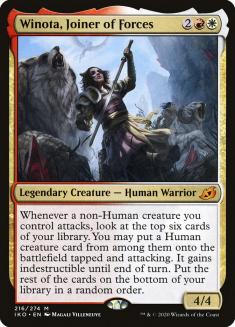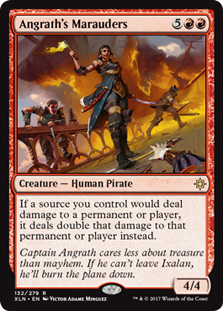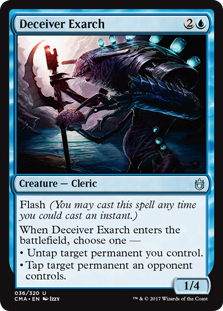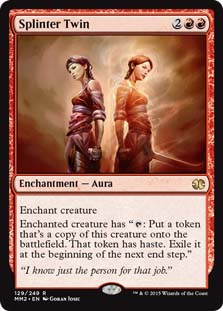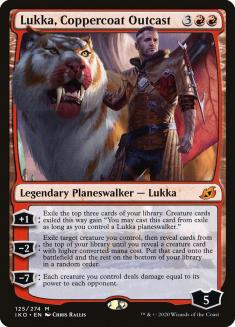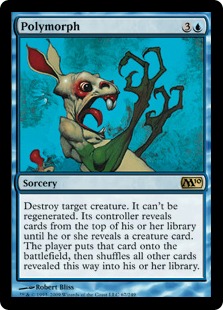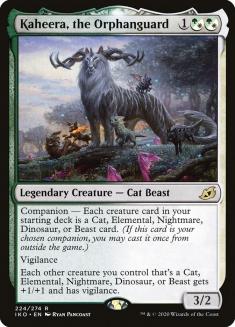Today was the most anticipated announcement concerning the health of Magic in years, and I’m left with a feeling of inadequacy.
Stealing permanents from the opponent should be costly and uncommon. Cards that cost seven mana shouldn’t be format-warping, and things that cheat them onto the battlefield shouldn’t be super-easy to put together. Banning Agent of Treachery feels like a mistake because of how trivial it is to cheat onto the battlefield. Seven-mana cards shouldn’t be ban targets. Those should be the cards enabling it. There will always be another Griselbrand or Emrakul, the Aeons Torn. Even in Pioneer, we’ve seen both Void Winnower and Resolute Archangel make appearances.
Today’s announcement recognized how powerful it was to cheat creatures onto the battlefield and directly noted that it was almost impossible to come back into the game when your opponent starts stealing your stuff. If an Agent of Treachery hits too quickly, getting your land stolen almost always ends the game on the spot. They wanted people to be able to “fight back” after a Winota trigger resolved, and I gotta say, that seems naive.
Cards like Winota, Joiner of Forces are few and far between, but this one in particular feels egregious. All you have to do with Winota to make it busted is play tokens or mana accelerants like Gilded Goose. Then, just pick the best medium-to-large Human and put it into your deck. Leaving Winota legal in Standard is dangerous. Leaving it legal in Historic is a conscious decision.
In Historic, this little buddy might actually be more likely to end the game than Agent of Treachery. If I’ve learned anything over the last few weeks in playing with these cards its that there comes a breaking point in almost every game where attacking with your creatures can leave you vulnerable to death if you miss. Angrath’s Marauders won’t provide as many “feel-bads” as Agent of Treachery, but it will almost always kill the opponent on the turn it enters the battlefield or the turn immediately following it.
In the last 72 hours, I’ve played a ton with Winota and let me tell you: that card is not “okay.” Cheating so many creatures and triggered effects onto the battlefield that quickly and that easily is just not acceptable. Angrath’s Marauders is just another “big thing” to find with Winota in Historic, but mostly I’m just afraid of any medium-sized Human that’s ever printed in the future. Winota feels so much stronger than any card I’ve played with in a long time, in that it’s so outrageously easy to turn on and attacking with creatures a single time can make or break your game.
I’ve tried pretty hard to put into words just how messed up it is, but the only statement I could muster that felt meaningful enough was this:
Winota, Joiner of Forces is a creature-centric Aetherworks Marvel.
Once you cast it, you spin the wheel. If you hit, you almost always win. If you miss once or twice, chances are your opponent will be able to sweep or punish you by attacking back on the following turn. It is trivial to construct the “spin,” as all you need is Winota, four mana, and any number of non-Human creatures to send into the red zone. Hitting Agent of Treachery was almost always GG, but slamming a tapped and attacking Kenrith, the Returned King was no joke.
It’s a snowball effect. Each game felt like a landslide one way or another. There were so few points in the game that actually mattered other than “Do you have Winota?” or “Do you have the answer to Winota?” That kind of gameplay is boring. It creates an immense feel-bad when you get to do outrageously powerful crap for such a low cost while they’re trying to play “normal” Magic. Does having to hold up mana every single turn to kill Winota remind you of anything?
The gameplay created by Splinter Twin was a “damned if you do, damned if you don’t” situation. If you held up mana to stop the combo, your opponent could spend that mana casting other creatures or reactive spells. They could generate a tempo gameplan by forcing you to hold up one or two mana every single turn. Otherwise, the Splinter Twin combo would kill you. With that said, the opponent didn’t always have it. In fact, it was often correct to play as if the opponent had nothing, because holding up mana every turn would put you so far behind that it wouldn’t matter.
And that’s the true power of Winota, forcing your opponent to sit idly while you cast other things. What are they supposed to do, hold up removal forever? If they don’t cast their Doom Blade then they’ll get run over by Legion Warboss. But if they burn their removal now instead of on Winota, they’ll likely lose on the spot to the first Human put onto the battlefield.
Splinter Twin combo was so often heralded as Modern’s “fun police,” keeping all the other weird decks in check. I was a huge fan of the archetype because I was good with it. But as I’ve grown older, I recognize the poor play patterns it created, and the impossible task it forced upon any new player. How does a new player beat a Splinter Twin deck? If they’re aware of it, it only makes it harder.
Operating at instant speed is one of the scariest things in Magic. Flash or Faeries or Twin all come with a tinge of guilt for me, because I know that I’m doing something that isn’t normally allowed. These archetypes generate play patterns that make “the right decision” trivial, because some combination of cards will usually invalidate your choice, no matter what decision you make. Winota operates on the opposite spectrum here, but having the crux of the game be completely centered around the Winota turn is toxic. You’re operating at sorcery speed, but if they don’t interact on the right turn at the right time, they’re dead.
Lukka, Coppercoat Outcast is similarly ridiculous. It’s no secret that a planeswalker revolving around a Polymorph ability is rad. Five mana to cast Polymorph that sticks around and can Polymorph again is incredible. But once again, you’re taking all of the juice out of the whole Polymorph suspense! Half the fun of a card like Polymorph is that your entire deck revolves around the card. You have token generators that act as your only creatures, and you have this one shot to put Emrakul, the Aeons Torn onto the battlefield. If your opponent leaves a Shock at the ready, resolving Polymorph becomes really difficult.
Lukka can be “stopped” in a similar way, but the downside is that you can just try again next turn. For zero mana. Lukka and Polymorph can both be put into control shells, but Polymorph is a much more interesting card. The fear it puts into both players is not something you can easily replicate. There’s no punishment for casting Lukka. The tension all but disappears when you kill that first token in response to a Polymorph. After killing the target for Lukka, you have to kill Lukka or repeat the same actions on the next turn, which in turn starts to feel bad because you’re having to spend so many resources to prevent this one thing from happening.
Last week, my article focused on how many different cards could be banned in today’s announcement because this Standard format is a nightmare. It isn’t one specific card or interaction that really ruins everything, but more that every deck seems to be doing mostly the same thing. There’s a reason traditional spot removal has started to lose significant value. Killing creatures isn’t ideal because most of them draw a card, which puts you down a resource when choosing to interact.
The other side of Standard is the arms race where both players try to play solitaire and hope they can do the biggest and baddest thing in the smallest time frame. Teferi, Time Raveler goes a long way in helping you goldfish here, as it provides you with a safety net against an opponent who would normally be able to interact. Did I mention how annoying it is to lose to Lukka when your opponent has Teferi on the battlefield?
Bouncing your opponent’s creature or enchantment or whatever while drawing a card and staying on the battlefield isn’t just obnoxious, it’s a joke. There’s a reason it sees play in every format — it breaks a core game mechanic (one-sided) while creating a tempo black hole and replacing itself.
Wilderness Reclamation and Fires of Invention are similar in that both are four-mana enchantments that generate a ton of extra mana. The difference is that gaining traction via Fires of Invention is much easier and much more conventional than Wilderness Reclamation. However, it has been proven time and time again that making good use out of Wilderness Reclamation is trivial.
The only thing I can think of is that they want these two cards to be legal until the Fall. They only have another three months of life in Standard, so banning them has very little value other than satiating a frothy fan base. We’re thirsting for a different play experience, and I don’t think we got that with the bans today.
To me, these changes are tone-deaf. They don’t solve the larger issues this Standard format faces. Second lives for every permanent and a lack of meaningful interaction leave me feeling indifferent about the format as a whole. I’m happy to continue ignoring it for the foreseeable future.
Changing the Companion Mechanic
Addressing the companion mechanic as a whole was very smart, as changing the mechanic can make these cards more palatable and less likely something gets banned in any format. It also potentially opens up design space involving companions in the future, but there are a few problems with the rule that was implemented.
Changing the mechanic to a special action where you pay three generic mana to put it into your hand is a very steep cost. Adding three mana to every companion changes their impact on any game drastically, but the heart of the matter is that they’ve effectively banned companions from aggressive decks. Midrange and control strategies can afford to pay that extra three mana at some point, and the extra card you gain then becomes a question of “Is the deckbuilding restriction worth it?”
I think they did a great job in making the companions less powerful, though I’m mostly sure they’ve effectively banned all of them out of existence for aggro decks:
Yorion, Sky Nomad is worth paying three extra mana for. Don’t get me wrong, eight mana is a lot for this creature, but it’s worth it. This is one of those “set-up” cards that generates an absurd payoff. You often don’t cast Yorion even if you have the mana for it, because you want or need to put one or two more permanents on the battlefield. As someone who’s played a ton of Yorion in the last month and change, this new rule will nerf it quite a bit, but it will still be good and still be playable. Since it was one of the best companions before the nerf, the fact that it will be one of the few to survive the nerf is logical.
Kaheera, the Orphanguard will forever be a blight on Magic’s history. Any deck that doesn’t want a single creature can and should play Kaheera. It’s free. Even at six mana, it’s still a body that can block or pressure the opponent a bit. It might not ever get cast in a game. It might not ever make a lasting impact that truly matters. But the fact remains: it’s free, and will randomly show up wherever a deck pops up that doesn’t want creatures.
Lurrus will be significantly worse, as aggressive strategies rely on having that potential to curve out. In Modern specifically, having that play on the third turn with Mishra’s Bauble was gross. Last week, I talked a bit about the change to companion needing a steep cost, and one that affected each of the companions the same. Most of my suggested changes, like discarding your hand or paying life, would have greatly impacted control or midrange companions more than aggressive ones. It’s a hard mechanic to balance.
This change will also make the idea of future companions a bit less terrifying, though limiting the design space isn’t exactly ideal. Adding an extra three mana to all of the current companions makes them a bit less explosive, which should be the case for an extra card. If the deckbuilding restrictions aren’t enough, the the only logical solution is to ban them or make the companion cost much steeper. If companions have a future in Magic design, making them harder to cast in order to unlock that extra card is big. And while the nerf will almost assuredly affect aggressive companions more than the rest, the fact remains that knocking them all down a peg is ideal.
This announcement could have changed the face of Magic. Instead, I’m left feeling hollow and still unenthusiastic about Standard and Historic. I get that people have been enjoying Historic, and I might dip my toe into that water at some point in the near future, but Standard is nightmarish. No single ban could fix it. The only way it will ever get better is with a scorched earth policy or significant rotations. The fundamentals in card design over the last two years have created a saturation of resources while providing very little tension in actual gameplay.
Cards that create excitement and cards that generate tension don’t have to be at odds. Not every playable rare needs to draw a card or create extra bodies. Not every four-mana enchantment needs to be an engine that your entire deck is built around. It’s okay for creatures to just be efficient. Half the point of Magic is the back-and-forth between creatures and removal spells. Without that dynamic, Magic becomes an entirely different game. Having every spell be a haymaker just creates fatigue. One of the greatest feelings in Magic is the one turn where your opponent bricks on a spell when you’re both on empty. That tension, rooting for your opponent to brick, disappears when every card replaces itself. The relief you get from gaining control of a battlefield is unbelievable.
Removing that element has changed Magic, and Standard, for the worse.

